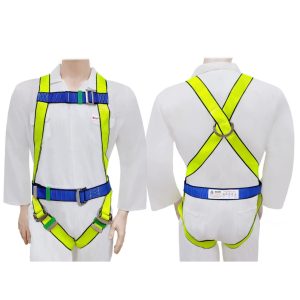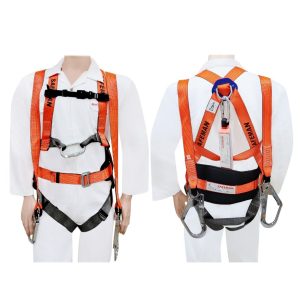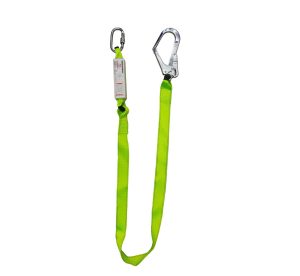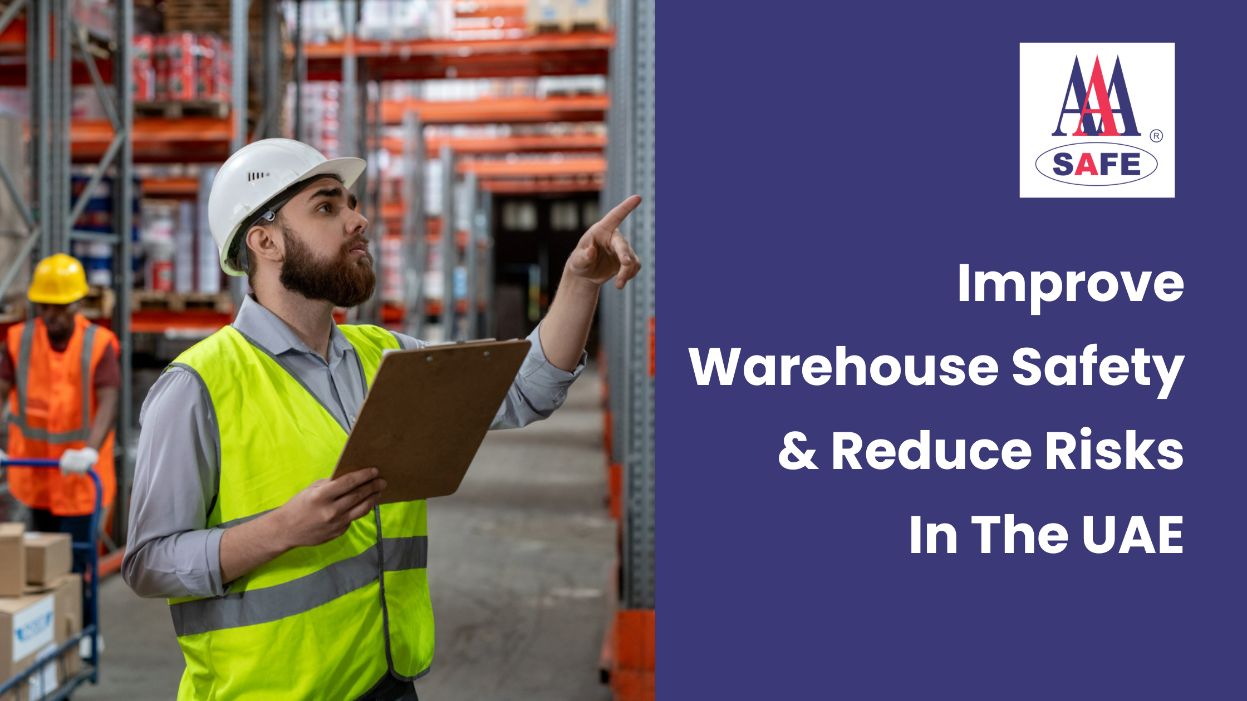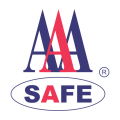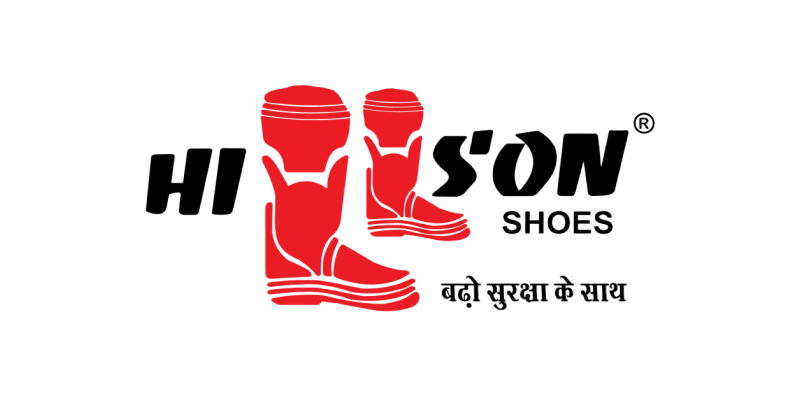To ensure the effective use of Personal Fall Arrest Systems (PFAS) at construction sites, it is crucial to follow best practices that enhance safety and compliance with regulations. PFAS are essential tools designed to protect workers from falls, which are a leading cause of injuries and fatalities in the construction industry. Proper implementation and use of these systems not only safeguard workers but also help maintain regulatory compliance and contribute to the overall success of construction projects. Here are the key practices to consider
Best Practices for Using Personal Fall Arrest Equipment
Proper Training and Certification
Comprehensive Training:
Effective use of Personal Fall Arrest Systems (PFAS) begins with thorough training. Workers need to be well-versed in how to properly don (put on) and doff (remove) their harnesses, securely attach lanyards, and identify suitable anchor points. Training should include practical demonstrations and hands-on practice to ensure that workers are comfortable with the equipment. Additionally, training should address the limitations of PFAS, such as maximum load capacities and the scenarios where the equipment may not provide adequate protection.
It is also important for training programs to cover the proper maintenance and inspection of PFAS. Workers should be educated on how to regularly check for signs of wear and tear, such as frayed straps or defective buckles, and understand the procedures for reporting and replacing damaged equipment.
Regular Refreshers:
Safety protocols and equipment standards can evolve, making it crucial to conduct periodic refresher courses. These sessions keep workers updated on the latest safety practices, regulatory changes, and advancements in equipment technology. Regular training refreshers are particularly important when new employees join the team or when there are updates to the PFAS or changes in site conditions that may affect how the equipment is used. Refresher courses help reinforce best practices and ensure that all personnel are up-to-date with current safety standards
Equipment Inspection
Pre-Use Inspections:
Conducting thorough inspections of Personal Fall Arrest Systems (PFAS) before each use is essential for ensuring safety. Workers should examine all components of the PFAS, including harnesses, lanyards, and anchor points, for signs of wear, damage, or corrosion. Key areas to check include:
- Harnesses: Look for frayed straps, broken buckles, or any other visible damage. Ensure that all adjustment points are secure and functional.
- Lanyards: Inspect lanyards for signs of fraying, cuts, or damage to the connectors. Check that the locking mechanisms are operational.
- Anchor Points: Verify that anchor points are secure and capable of bearing the intended load. Ensure that there is no rust or corrosion that could compromise their strength.
Workers should also ensure that the PFAS is properly fitted and adjusted to their body size and the specific task they are performing. Any issues identified during the pre-use inspection should be addressed immediately by either repairing or replacing the damaged components.
Scheduled Maintenance:
In addition to daily pre-use inspections, implementing a regular maintenance schedule is crucial for ensuring the continued reliability of fall arrest equipment. This schedule should include:
- Thorough Inspections: Conduct more detailed inspections of PFAS components at least semi-annually, or quarterly for equipment that is frequently used. These inspections should be performed by a qualified person who can assess the equipment’s overall condition and identify any potential issues that may not be apparent during routine checks.
- Post-Fall Inspections: Any equipment that has been involved in a fall must be inspected by a qualified person before it can be reused. A fall can compromise the integrity of the equipment, even if there are no visible signs of damage. The inspection ensures that the equipment is still safe for use and meets all safety standards.
Regular maintenance and prompt attention to any identified issues help extend the lifespan of PFAS and maintain a high level of safety on construction sites. Ensuring that all equipment is in top condition reduces the risk of equipment failure and enhances overall worker protection
Correct Equipment Selection
Choose Appropriate Systems:
Selecting the right Personal Fall Arrest System (PFAS) is crucial for ensuring worker safety. The equipment chosen must be suitable for the specific job and the environment in which it will be used. Key considerations include:
- Height of the Work: Different tasks and heights may require different types of fall arrest systems. For example, working at great heights may necessitate a more robust system with additional features for added security.
- Weight of the Worker: PFAS must be rated to accommodate the weight of the worker, including any tools or equipment they may be carrying. Overloading a system can reduce its effectiveness and increase the risk of failure.
- Type of Work Being Performed: The nature of the work can influence the type of PFAS needed. For instance, work that involves frequent movement or requires climbing may benefit from a harness with additional mobility features or specific lanyard designs.
Use Compatible Components:
To ensure maximum safety and functionality, all parts of the PFAS, including harnesses, lanyards, and anchors, must be compatible and meet the relevant safety standards, such as those set by OSHA. Key points to consider include:
- Compatibility of Components: Each component of the PFAS must work together as a cohesive system. For example, the lanyard should be compatible with the harness and anchor points to ensure proper attachment and function.
- Compliance with Standards: Ensure that all equipment meets OSHA standards and any other relevant regulations. Harnesses, for instance, should be designed to distribute fall forces evenly across the body to minimize injury risk. This helps to reduce the impact forces experienced by the worker during a fall and increases the likelihood of a safe landing.
Proper equipment selection and compatibility are essential for providing effective fall protection and preventing accidents. By carefully choosing and verifying the equipment used, you can ensure that it provides the necessary safety features and meets all regulatory requirements.
Safe Work Practices
Anchor Points:
Proper attachment of the Personal Fall Arrest System (PFAS) is vital for ensuring its effectiveness. Key considerations include:
- Secure to Reliable Anchor Points: Always anchor the PFAS to a stable and reliable point that can withstand the forces generated during a fall. This means choosing anchor points that are structurally sound and capable of supporting the necessary load. Common anchor points include structural beams, purpose-built anchors, or other sturdy fixtures.
- Position Above the Worker: Whenever possible, the anchor point should be positioned above the worker’s head. This helps to reduce the distance the worker would fall before the PFAS engages, minimizing the impact forces experienced during a fall. Anchoring above the worker also helps to keep the fall path as vertical as possible, which reduces the potential for swing falls or collisions with nearby structures.
Maintain Three Points of Contact:
Ensuring stability while working at heights is crucial for preventing falls. A key practice is maintaining three points of contact when using ladders or scaffolding. This means:
- Two Hands and One Foot, or Two Feet and One Hand: Workers should always have at least three points of contact with the ladder or scaffolding. This practice enhances stability and reduces the risk of slipping or losing balance. For example, when climbing a ladder, workers should keep both hands on the rungs and at least one foot firmly placed on the ladder. Similarly, when working on scaffolding, keeping both feet and one hand in contact with the structure helps maintain balance and safety.
By following these safe work practices, workers can enhance their stability and reduce the risk of falls, ensuring that the PFAS functions effectively and provides the intended protection.
Emergency Preparedness
Rescue Plans:
Having a well-developed rescue plan is critical for effectively responding to fall incidents and ensuring worker safety. Key elements include:
- Developing a Rescue Plan: Create a detailed plan outlining the steps to be taken in the event of a fall. This plan should include specific procedures for retrieving a fallen worker, the roles and responsibilities of the rescue team, and the use of necessary equipment. The plan should be tailored to the unique conditions and layout of the construction site.
- Training on Response Procedures: Workers should be trained on the rescue plan and how to use the equipment involved in a rescue. Training should cover how to quickly and safely retrieve a fallen worker, the proper use of rescue tools and equipment, and how to communicate effectively during an emergency. Ensuring that all workers understand their role in the rescue process helps to minimize response times and improve overall safety.
Regular Drills:
Conducting regular drills is essential for ensuring that workers are familiar with emergency procedures and can execute them effectively. Key practices include:
- Scheduling Drills: Plan and execute regular rescue drills to practice the procedures outlined in the rescue plan. These drills should simulate real-life scenarios as closely as possible, allowing workers to practice their response skills in a controlled environment.
- Evaluating and Improving: After each drill, evaluate the performance of the rescue team and identify any areas for improvement. Use feedback from the drills to refine the rescue plan, update training materials, and address any gaps in the procedures.
Regular drills help to reinforce the importance of the rescue plan, ensure that workers are prepared for emergencies, and enhance the overall effectiveness of the response. By being well-prepared and practicing regularly, construction teams can respond quickly and efficiently to fall incidents, minimizing potential injuries and improving safety outcomes.
To wrap it up
By adhering to these best practices, construction sites can significantly reduce the risk of falls and enhance the overall safety of workers using Personal Fall Arrest Systems (PFAS). Ensuring that workers are well-trained, equipment is regularly inspected, and safe work practices are followed helps create a robust safety framework that minimizes the potential for accidents. Implementing a culture of safety and compliance is essential not only for protecting workers but also for fostering a more productive and efficient work environment.
A strong safety culture involves continuous education, effective communication, and a commitment to maintaining high standards of safety. By integrating these practices into daily operations and emphasizing the importance of fall protection, construction managers can create a safer workplace where workers are empowered to perform their tasks confidently and securely. This proactive approach not only helps in preventing falls but also contributes to the overall success and smooth operation of construction projects.



